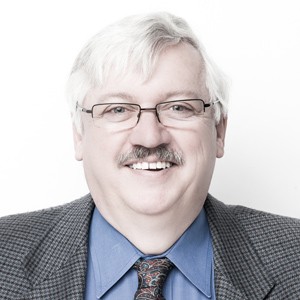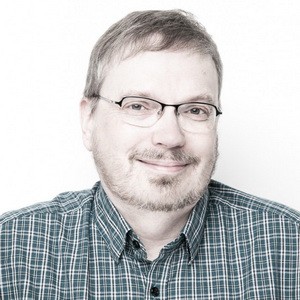Family (Grades K-3)
Dr. Lorne HammondCurator of History (Retired)
Why did you want to become a historian?
When I was young we lived and vacationed among a mix of Etruscan, Roman and Renaissance sites and World War II battlefields in Germany and Italy. Right from the start history was about people, museums and art galleries, objects, books and physical landscapes. And I had great teachers.
How did you become a curator?
I moved from academic classrooms to the museum when my wife Monica spotted an interesting history job and I applied. They liked my mix of skills. I was very fortunate to be mentored by a deeply experienced staff and was immediately thrown into the busy world of collections, exhibits and work with the public.
How would you describe a typical day at work?
I was told when I was hired “you will never be bored”. That is still true. A day is a mix of public inquiries, email research questions, collections work, media requests, mentoring interns and work with docents on collections or public education training. A constant is the team work on projects across a wide variety of departments. No two days are exactly the same.
Dennis DuffyArchivist (Retired)
Why did you want to become an archivist?
I’ve always been interested in stories about BC’s pioneer days, ghost towns and so on. Like ghost towns, archival records are another kind of relic from the past and provide us with windows to look into that past. My work with archival films and sound recordings gives me a set of especially interesting windows to look through.
How did you become an archivist?
Through my background in audio-visual media. I was first hired in 1978 as a summer student, to copy sound recordings for preservation. I later worked as a contractor and my role gradually expanded; I was asked to research, write and edit books, to identify films made in British Columbia and eventually to help the BC Archives acquire and preserve historic films about BC. Finally, in 1998, I was given the opportunity to join the regular staff of the archives. (It only took me 20 years!)
What do you do as an archivist?
I still do some work with the sound and film collections. But I also help to deal with new acquisitions of archival records; with arranging and describing collections of records; with descriptive data and databases; and with many other projects. Recently, I edited a video production based on old films of soldiers in Victoria and Vancouver, training and preparing to leave BC to fight in the First World War. The video will be part of an exhibit commemorating the 100th anniversary of that war.
Stories by or about this person
Two boys from the DeWolf family enjoy playing in boats—both real and pretend. What pretending games do you like to play?
In the 1940s, the town of Ymir, BC hosted large family festivals. Watch some May Day celebrations, a May Queen pageant and crowning, children dancing around a maypole and a baseball game. These colourful May Day celebrations were filmed by Lester G. Morrell in 1940.
On holiday at Premier Lake in about 1926, the DeWolf family swims, dances and barbecues. What does your family like to do on holiday?
Young Gladys DeWolf and her friends give a dance recital in the back yard, filmed by her dad Allan in Cranbrook, BC, in about 1926.
The Browning children enjoy a snowy day at Britannia Beach in about 1930. Has playing in the snow changed since this film was made?
Follow a family’s BC camping trip in 1957 and 1958. First visit Miracle Beach on Vancouver Island and then travel to a provincial campsite at Okanagan Lake.
Dr. Kathryn BridgeCurator Emerita of History and Art
Why did you want to become a curator?
The collections are fascinating and there is so much research that can be done. I learn something new every day!
How did you become a curator?
I started working in the archives. Soon, I got involved with exhibits and started to research interesting stories that our museum could tell. At that point, I became a curator.
What does a curator do?
Curators discover stories about objects in the museum’s collection. They also look for important new objects (or acquisitions) to add to the museum’s collection. Curators then share their knowledge and these stories with others by putting stories online, writing books, curating exhibitions and participating in public programs.
What have you enjoyed most about the research you’ve done for the Family: Bonds and Belonging exhibit?
I like making connections between the archives and the history collections to create new knowledge and then sharing that knowledge with others.



